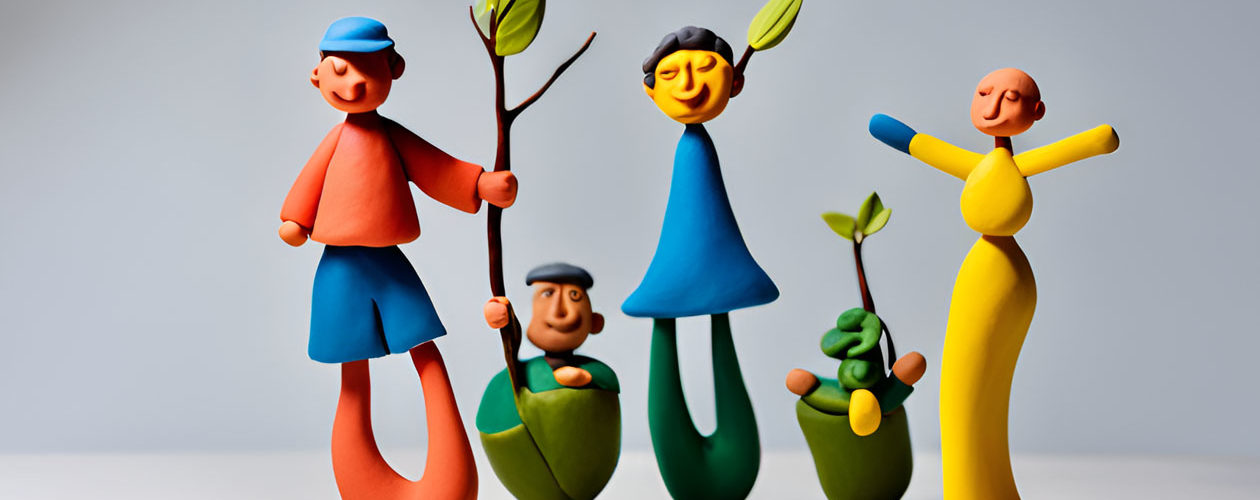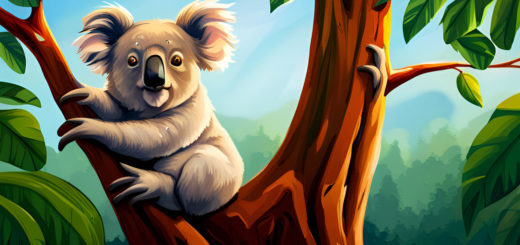Balancing Conservation and Human Interactions: The Importance of Wildlife Management in Australia

As Australians, we’re blessed with a diverse array of wildlife, from kangaroos and koalas to cockatoos and crocodiles, living alongside us in our sunburnt country. But, with this incredible biodiversity comes a fair dinkum responsibility. Wildlife management in Australia isn’t just a luxury, it’s a necessity. This is not just about preserving our unique fauna for future generations but also managing our interactions with them, finding that balance between conservation and human interaction. If not done right, we could end up with a few roos loose in the top paddock.
For this yakka, we must ensure our approaches to wildlife management are informed, ethical, and sustainable. Understanding the importance of this task will prepare us better for the journey ahead. So, whether you’re a city slicker or a bushie, there’s a role for all of us in safeguarding Australia’s wildlife. Pull up a stump and let’s have a yarn about it.
Wildlife Management in Australia
Wildlife management, in the Australian context, refers to the science and art of maintaining healthy wildlife populations and habitats. It includes strategies such as managing habitats, controlling pests, managing wildlife populations and implementing conservation policies.
Now, you might be wondering, “Who’s responsible for this?” Well, a good chunk of it falls to various government agencies at federal, state, and territory levels. These blokes ensure that our natural heritage, including our unique wildlife, is protected and conserved for future generations. For example, they oversee matters like habitat protection and wildlife trade regulation, which play a significant role in wildlife conservation. Speaking of wildlife trade and trafficking in Australia, these activities can have severe impacts on our wildlife populations, and proper management is essential to prevent the loss of our iconic species.
These agencies, along with non-government organisations and community groups, implement various wildlife management strategies across Australia. These strategies could include everything from restoring habitats to controlling invasive species. At this point, it’s worth mentioning how crucial habitat preservation and ecosystem restoration are in maintaining our natural ecosystems.
However, as we’ll see in the next section, our wildlife is facing multiple threats. To understand why wildlife management is important in Australia, let’s delve into these threats.
Threats to Wildlife in Australia
Unfortunately, it’s not all sunshine and rainbows for our wildlife. Various threats have been pushing our unique fauna towards the brink. Let’s unpack some of them, shall we?
First off, habitat loss and fragmentation. As we clear land for agriculture, mining, and urban development, we’re inadvertently pushing wildlife out of their homes. This loss and division of habitat can lead to smaller, isolated populations that are more susceptible to extinction. An important component of managing this threat is habitat preservation.
Then there’s the biggie – climate change. Rising temperatures, changing rainfall patterns, increased frequency and intensity of bushfires – all these are shaking up the lives of our wildlife. And they’re struggling to keep up. In fact, climate change threatens wildlife in Australia in significant ways.
Invasive species are another headache. Whether it’s cane toads in Queensland or foxes in Tasmania, these invaders are a major threat to our native wildlife, out-competing them for resources or preying on them. A significant part of wildlife management is controlling these invasive species and minimising their impacts.
Lastly, there’s the issue of human-wildlife conflict. This is when our activities clash with those of wildlife, causing negative impacts on both sides. Whether it’s kangaroos munching on crops or crocodiles posing a risk to humans, addressing these conflicts is a critical part of wildlife management.
As mentioned earlier, managing these threats requires a range of strategies. This is where conservation efforts come into play. Let’s take a squiz at some of them.
Conservation Efforts in Australia
We’re not ones to sit back and watch as our wildlife suffers. Australians have been taking strides in conservation, using a mix of methods to protect and preserve our unique fauna.
One of the key tools in our conservation toolbox is protected areas, including national parks. These are areas set aside specifically for nature conservation, providing safe havens for our wildlife. But, of course, it’s not enough to just declare an area as protected. Management efforts need to be implemented within these areas to maintain their biodiversity.
Wildlife rehabilitation and rescue efforts are also paramount. Across the country, wildlife hospitals and rehabilitation centres work around the clock to rescue, rehabilitate and release injured or orphaned wildlife. This is especially crucial in times of natural disasters, such as bushfires or cyclones, when wildlife are most vulnerable.
Beyond these more formal initiatives, there’s a growing emphasis on community-based conservation programs. These grassroots initiatives empower local communities to take an active role in conservation, whether through citizen science projects, community clean-up days, or habitat restoration activities. It’s about taking pride in our local wildlife and doing our bit to ensure their survival.
As we continue to engage in these efforts, it’s important to keep in mind the unique challenges that come with managing wildlife in Australia, such as the ones caused by human-wildlife conflict. Let’s dig a bit deeper into this issue.
Human-Wildlife Conflict in Australia
We all love the idea of having koalas in our backyards and kangaroos hopping down our streets, but sometimes, our interactions with wildlife can lead to conflict. This is when our interests clash with those of wildlife, and it can have negative impacts on both sides.
Take for instance the case of kangaroos munching on crops in rural areas or the threat posed by crocodiles in northern Australia. The challenge here is finding ways to reduce these conflicts while still respecting the needs of wildlife.
There are various strategies we can employ to address human-wildlife conflict. For instance, fencing can be used to keep wildlife away from certain areas, while alternative food sources can be provided to deter wildlife from entering human-dominated landscapes. We can also use a variety of non-lethal methods to deter wildlife, such as using sound, light, or scent-based repellents.
But perhaps one of the most effective ways to reduce human-wildlife conflict is through education and awareness. The more we understand about wildlife and their behaviours, the better equipped we are to live alongside them harmoniously. Remember, it’s not about us versus them; it’s about finding ways to coexist.
While managing these conflicts is a vital part of wildlife conservation, it’s not the only aspect. The sustainable use of wildlife also plays a crucial role. Let’s have a chat about that next.
Sustainable Use of Wildlife in Australia
In our pursuit of conservation, it’s important to remember that wildlife isn’t just something to be preserved in a museum – it’s a living, breathing part of our world that can be sustainably utilised. Done right, this can provide economic benefits while still ensuring the long-term survival of wildlife populations.
Hunting and fishing are two areas where sustainable use can be implemented. By setting up regulations, such as bag limits and closed seasons, we can allow for recreational hunting and fishing while ensuring that wildlife populations aren’t overly exploited. It’s about finding that balance between use and conservation.
Sustainable tourism is another aspect. Wildlife viewing, whether it’s whale watching off the coast of New South Wales or bird watching in the Daintree Rainforest, can bring in significant tourism revenue. But it’s important to manage these activities so that they don’t disturb or harm the very wildlife they’re trying to appreciate.
Lastly, there’s the matter of responsible consumption. Whether it’s choosing seafood from sustainable sources or purchasing products that don’t contribute to habitat loss, our choices as consumers can have a significant impact on wildlife. So next time you’re at the shops, spare a thought for the wildlife.
As we look to the future, we must continue to evolve and improve our approaches to wildlife management. So, what might the future of wildlife management in Australia look like? Let’s take a gander.
Future of Wildlife Management in Australia
Looking to the future, there’s plenty of potential for innovation and improvement in wildlife management. With emerging technologies and an increasing emphasis on collaboration and partnerships, we can continue to refine our approaches and tackle the challenges that lie ahead.
Emerging technologies, such as drones and remote sensing, are revolutionising the way we study and manage wildlife. For instance, drones can be used to monitor wildlife populations or restore habitats, while remote sensing can provide valuable data on changes in habitat quality or climate conditions. These technologies can help us be more effective and efficient in our conservation efforts.
Collaboration and partnerships are another key element. By working together, whether it’s between different government agencies, non-government organisations, Indigenous groups, or the wider community, we can achieve more than we can alone. This can also ensure that a wider range of perspectives and expertise are brought to the table, improving the effectiveness of our management strategies.
Despite these exciting opportunities, it won’t be smooth sailing. Wildlife management in Australia faces various challenges, from funding constraints to changing environmental conditions due to climate change. But, as the old saying goes, “she’ll be right”. With dedication, innovation, and a bit of good old Aussie grit, we can overcome these hurdles and ensure a bright future for our wildlife.
As we wrap things up, let’s have a quick recap and think about how we, as individuals, can support these efforts.
Conclusion
Alright, mates, we’ve covered a fair bit of ground today, haven’t we? We’ve talked about the importance of wildlife management in Australia, the various threats our wildlife face, the efforts we’re making to conserve our unique fauna, and the challenges and opportunities that lie ahead. But, as we’ve seen, it’s not just about what the government or conservation organisations do – there’s a role for all of us in this.
Whether it’s volunteering with a local conservation group, making wildlife-friendly choices in our daily lives, or simply spreading the word about the importance of wildlife conservation, every little bit helps. Remember, our wildlife is a big part of what makes Australia the great place it is. It’s up to us to ensure that they continue to thrive in our sunburnt country.
So, next time you see a kangaroo hopping by or hear a kookaburra laughing in the trees, spare a thought for the immense diversity and beauty of our wildlife. And think about what you can do to ensure that future generations can enjoy the same experiences.
Remember, every action counts when it comes to endangered species protection and wildlife conservation. So, go on, get out there and make a difference for our Aussie wildlife!

